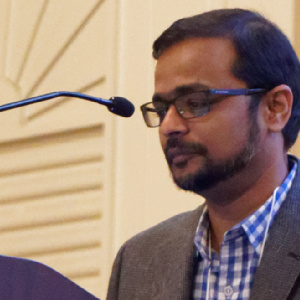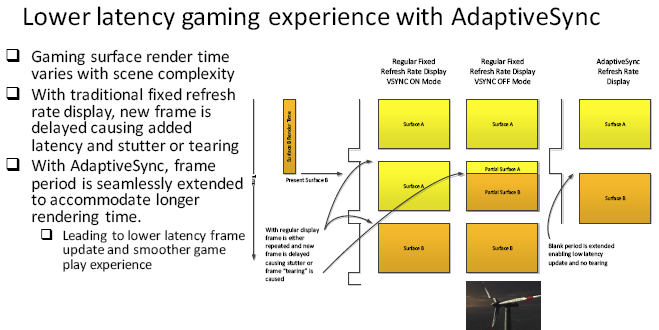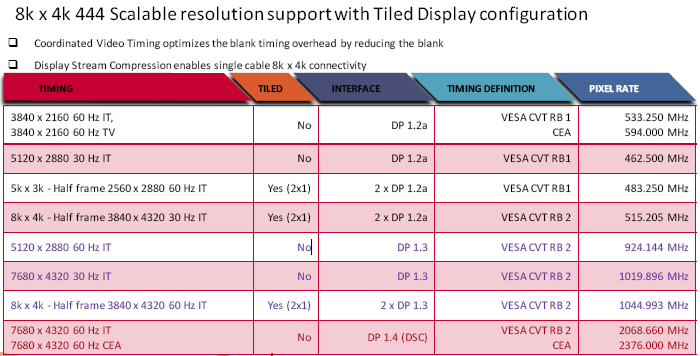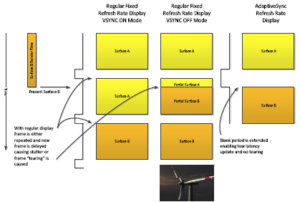
Syed Athar Hussain works for AMD. He is vice chair of VESA and he spoke about DisplayPort in that capacity at the Summit. Technologies that VESA is working on include DisplayPort, Adaptive sync, Display Stream Compression (DSC), frame-aligned dynamic transport, Display ID (better than EDID) and a replacement for coordinated video timing with reduced blanking. Hussain went through the development of Display Port from V1.0 to V1.4.
DisplayPort’s packet architecture allows data to be sent over a range of transport layers such as ThunderBolt and WiGIG. DSC allows up to 3X compression that is visually lossless.
Adaptive sync is an interesting topic for Hussain. Video is typically played back at with frame rates from 24 to 60 per second, while games go from 30 to 120 fps and AdaptiveSync can ensure that the display uses the correct rate and can adjust the frame timing to ensure that there is no tearing and a smooth flow of frames. It can do a low latency frame update, for example, if a frame is taking longer to render. In traditional fixed frame rate systems, missing one frame would mean a delay until the next frame, or tearing if the frame is updated during display.
 AdaptiveSync supports Variable Frame rates. Click for higher resolution
AdaptiveSync supports Variable Frame rates. Click for higher resolution
Looking at how DisplayPort can support HDR, Hussaid explained that there is a new frame-aligned dynamic meta transportation can allow data on gamma, luminance etc to be sent on a frame by frame basis to allow seamless transition between SDR and HDR or dynamic HDR. This is supported by a DisplayPort Video Stream Configuration Extension (VSC Ext) which allows more than 2K of data with each frame. The new DisplayID system will be able to provide sink luminance and gamut capability that will help with accurate tonemapping.
Hussain then moved onto USB type C. As well as docking, it is ideal for VR, where high frame rate is really important.
A ‘Tiled Display Topology Data Block’ automatically supports dual cables for 8K support in DisplayPort 1.3. Hussain showed the table below that sets out how to support different resolutions at 4K and above.


